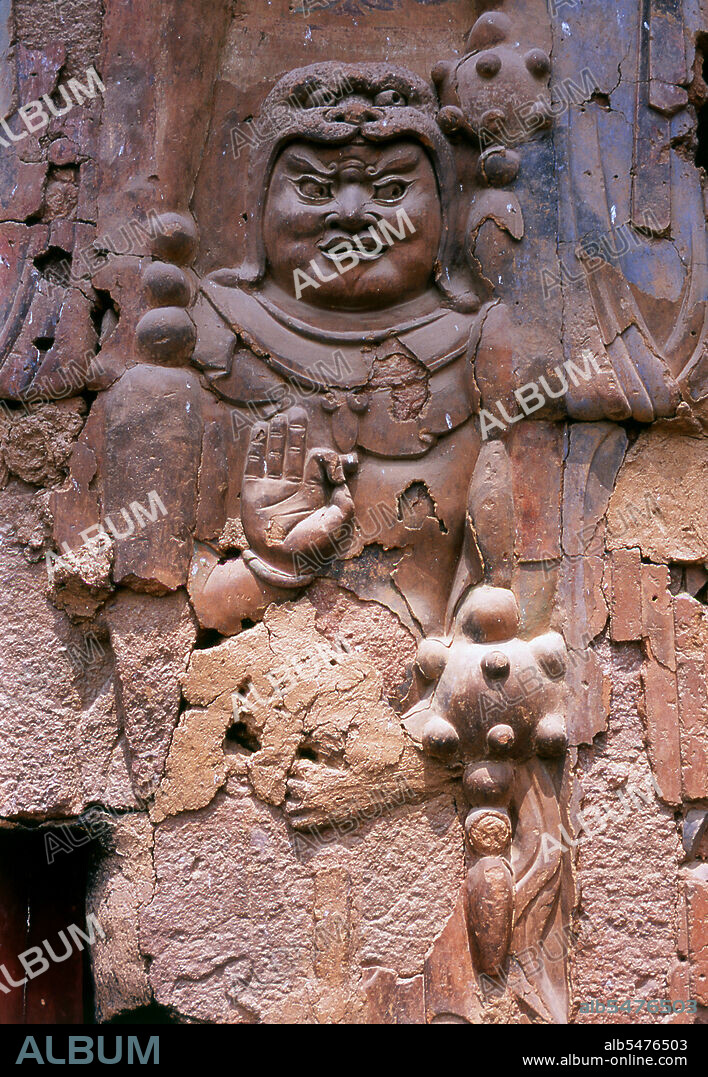alb5476503
China: Song Dynasty cave guardian, Maiji Shan Grottoes, Tianshui, Gansu Province

|
Añadir a otro lightbox |
|
Añadir a otro lightbox |



¿Ya tienes cuenta? Iniciar sesión
¿No tienes cuenta? Regístrate
Compra esta imagen

Título:
China: Song Dynasty cave guardian, Maiji Shan Grottoes, Tianshui, Gansu Province
Descripción:
Ver traducción automática
Maijishan Shiku (Maiji Shan Grottoes) are one of China’s four most important Buddhist temple groups (the others being Datong, Luoyang, and the Mogao Caves at Dunhuang). Starting from the Northern Wei (386-535) and Northern Zhou (557-81) Dynasties, Buddhists cut caves into the sides of a red outcrop rising from the surrounding foliage-covered hills. Figures of the Buddha, of bodhisattvas and disciples were carved in harder rock brought from elsewhere, and installed in the caves. At their height, the Maijishan caves are believed to have numbered almost 800, but they suffered serious damage during an earthquake in 734. This event, combined with the exigencies of time, has reduced the number of extant caves to 194. The existing rock cut architecture contains over 7,200 Buddhist sculptures and over 1,000 square meters of murals. Maiji Shan translates literally as 'Wheatstack Mountain'.
Crédito:
Album / Pictures From History/Universal Images Group
Autorizaciones:
Modelo: No - Propiedad: No
¿Preguntas relacionadas con los derechos?
¿Preguntas relacionadas con los derechos?
Tamaño imagen:
3490 x 5045 px | 50.4 MB
Tamaño impresión:
29.5 x 42.7 cm | 11.6 x 16.8 in (300 dpi)
 Pinterest
Pinterest Twitter
Twitter Facebook
Facebook Copiar enlace
Copiar enlace Email
Email
